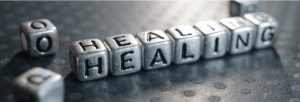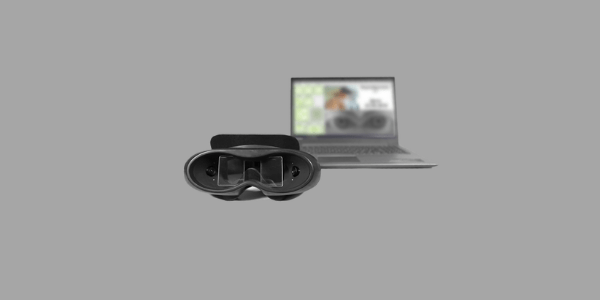As physiotherapists, we use objective measurements in our practice to track the progress of our patients’ healing. We use these measurements to assess improvements in muscle strength, flexibility and range of motion. It only makes sense to have a way to accurately measure our outcomes.
The same goes for fitness. How do we measure just how fit (or not fit) we are? Why do we not do this on a regular basis to see if all those hours on the exercise bike have actually paid off?
We all need a way to measure our fitness level on a regular basis. So where exactly do you start and how do you do this on your own?
First, of all, we need to define what we are looking at in terms of fitness and why it is important to determine your level of fitness. Here are some of the main components that you need to take a look at when measuring how fit you are:
- flexibility
- muscle strength
- cardiovascular endurance
- balance/proprioception
- body composition
Let’s look at these components a little more closely:
Flexibility is so crucial to a healthy fitness level, yet it is often the area that many of us like to skip! Flexibility allows our joints to move without restriction and compression and therefore reduces the impact on the joints and potential for injury and damage.
Muscle strength is how you generate power to do your activities and is so important for improving and maintaining a healthy bone density. Some of the larger muscles in our body like to dominate which facilitates weakness in other smaller groups. The consequence is a muscle imbalance which leads to tightness and overuse and likely, eventual injury.
Cardiovascular endurance is the ability for your lungs, heart and blood vessels to tolerate exercise and activity for extended periods of time. It is basically how strong your heart is, which is vital so that it can pump blood and oxygen to your body. Having cardiovascular fitness is so important to prevent numerous health problems but it also allows you have longer endurance and strength in your activities. The good news is that with exercise, your heart and vascular function improve!
Balance is often overlooked in fitness programs. Our bodies are amazing! Proprioception, the unconscious sense we have to perceive movement, is made up of an elaborate system of sensory receptors and nerve pathways in our muscles and joints that transmit information to our brain about our body’s position. This lets us react appropriately with the proper movement and not fall over! By improving this sense of proprioception with certain exercises, we reduce the risk of injury and perform well in a given activity or sport.
Body composition refers to the proportion of fat and fat-free mass in the body. Healthy body composition includes a lower proportion of body fat and a higher proportion of fat-free mass. Knowing your own body’s composition is an essential measurement that is used to assess your health and fitness level. Unhealthy body composition has disastrous consequences such as Type 2 diabetes, cardiovascular conditions, stroke, osteoarthritis and many others.
Ok, great. You know what you need to measure but where do I start? The good news is that there is no need to head to the physiology lab to measure your fitness level. You can do it at home!
Try these simple tests right now!
When you are finished, make sure to record your results and start exercising! Refer back to these measurements to see how far you’ve come in your exercise program. As long as you are improving, your fitness plan is working. If you find there isn’t a lot of change it may be time to change your workout routine.
- Active straight leg raise
- The pushup test
- 1-mile walk test
- One leg balance test
- BMI measurement
1- Active Straight Leg Raise – flexibility measurement
Lie on the ground with both legs extended. With both legs straight, raise your right leg straight up in the air while making sure to keep your left leg completely flat on the ground. Measure how far in degrees you can comfortably raise your leg without compensations like lifting your down leg or bending your knee (0 degrees represents the starting position, 90 degrees represents straight up and down).
Good: 80 degrees or greater
Average: 60-80 degrees
Poor: Less than 60 degrees
2- The Push-Up Test– muscular strength measurement
Test: Do as many pushups as you can in one minute. (men-full push-up position, women in modified position on knees)
Scoring:
Ratings for Men (Full Push-Ups), based on Age
| 20-29 | 30-39 | 40-49 | 50-59 | 60+ | |
| Excellent | > 54 | > 44 | > 39 | > 34 | > 29 |
| Good | 45-54 | 35-44 | 30-39 | 25-34 | 20-29 |
| Average | 35-44 | 24-34 | 20-29 | 15-24 | 10-19 |
| Poor | 20-34 | 15-24 | 12-19 | 8-14 | 5-9 |
| Very Poor | < 20 | < 15 | < 12 | < 8 | < 5 |
Ratings for Women (Modified Push-Ups), based on Age
| 20-29 | 30-39 | 40-49 | 50-59 | 60+ | |
| Excellent | >48 | >39 | >34 | >29 | >19 |
| Good | 34-48 | 25-39 | 20-34 | 15-29 | 5-19 |
| Average | 17-33 | 12-24 | 8-19 | 6-14 | 3-4 |
| Poor | 6-16 | 4-11 | 3-7 | 2-5 | 1-2 |
| Very Poor | < 6 | < 4 | < 3 | < 2 | < 1 |
3- 1-Mile Walking Test – cardiovascular fitness measurement
Test: Walk one mile as quickly as possible. Record your time.
Men
| Age | 20-29 | 30-39 | 40-49 | 50-59 | 60-69 | 70+ |
| Excellent | <11:54 | <12:24 | <12:54 | <13:24 | <14:06 | <15:06 |
| Good | 11:54-13:00 | 12:24-13:30 | 12:54-14:00 | 13:24-14:24 | 14:06-15:12 | 15:06-15:48 |
| Average | 13:01-13:42 | 13:31-14:12 | 14:01-14:42 | 14:25-15:12 | 15:13-16:18 | 15:49-18:48 |
| Fair | 13:43-14:30 | 14:13-15:00 | 14:43-15:30 | 15:13-16:30 | 16:19-17:18 | 18:49-20:18 |
| Poor | >14:30 | >15:00 | >15:30 | >16:30 | >17:18 | >20:18 |
Women
| Age | 20-29 | 30-39 | 40-49 | 50-59 | 60-69 | 70+ |
| Excellent | <13:12 | <13:42 | <14:12 | <14:42 | <15:06 | <18:18 |
| Good | 13:12-14:06 | 13:42-14:36 | 14:12-15:06 | 14:42-15:36 | 15:06-16:18 | 18:18-20:00 |
| Average | 14:07-15:06 | 14:37-15:36 | 15:07-16:06 | 15:37-17:00 | 16:19-17:30 | 20:01-21:48 |
| Fair | 15:07-16:30 | 15:37-17:00 | 16:07-17:30 | 17:01-18:06 | 17:31-19:12 | 21:49-24:06 |
| Poor | >16:30 | >17:00 | >17:30 | >18:06 | >19:12 | >24:06 |
4- 1-legged standing balance test.
This one is pretty self-explanatory. Stand on 1 leg without holding onto anything. Normal balance is one minute, less than 30 seconds balance: exercises are needed!
5- BMI (Body Mass Index) – Body Composition Measurement
Figure out your weight in kilograms and your height in meters
BMI = your weight divided by your height squared (e.g. 56 kg/ (1.5 meters x 1.5 meters) = 24.8 BMI)
BMI Scoring Categories:
Underweight = <18.5
Normal weight = 18.5–24.9
Overweight = 25–29.9
Obesity = BMI of 30 or greater
So, now you know how fit you are…it’s time to get or to keep on moving!






